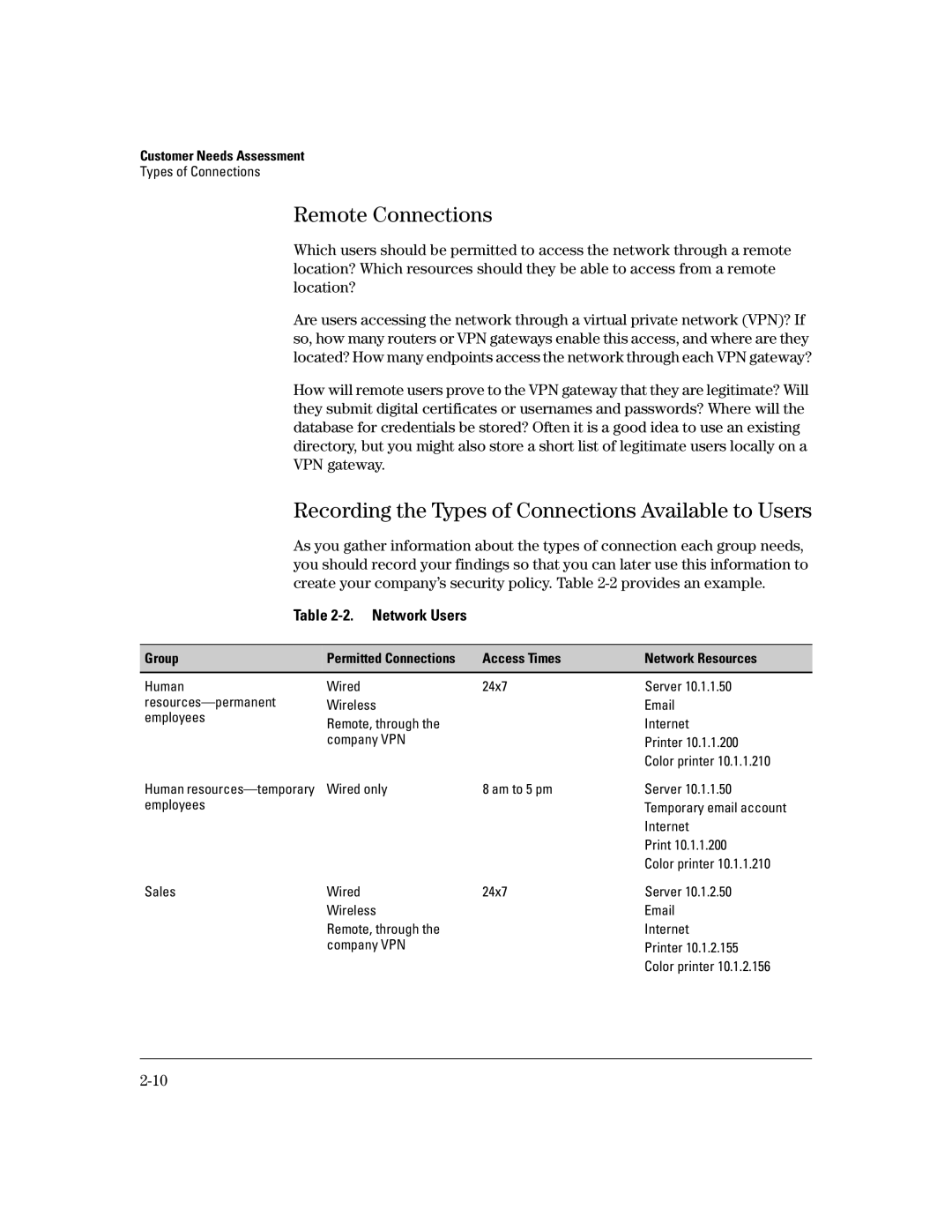Customer Needs Assessment
Types of Connections
Remote Connections
Which users should be permitted to access the network through a remote location? Which resources should they be able to access from a remote location?
Are users accessing the network through a virtual private network (VPN)? If so, how many routers or VPN gateways enable this access, and where are they located? How many endpoints access the network through each VPN gateway?
How will remote users prove to the VPN gateway that they are legitimate? Will they submit digital certificates or usernames and passwords? Where will the database for credentials be stored? Often it is a good idea to use an existing directory, but you might also store a short list of legitimate users locally on a VPN gateway.
Recording the Types of Connections Available to Users
As you gather information about the types of connection each group needs, you should record your findings so that you can later use this information to create your company’s security policy. Table
Table 2-2. Network Users
Group | Permitted Connections | Access Times | Network Resources |
|
|
|
|
Human | Wired | 24x7 | Server 10.1.1.50 |
Wireless |
| ||
employees | Remote, through the |
| Internet |
|
| ||
| company VPN |
| Printer 10.1.1.200 |
|
|
| Color printer 10.1.1.210 |
Human | Wired only | 8 am to 5 pm | Server 10.1.1.50 |
employees |
|
| Temporary email account |
|
|
| Internet |
|
|
| Print 10.1.1.200 |
|
|
| Color printer 10.1.1.210 |
Sales | Wired | 24x7 | Server 10.1.2.50 |
| Wireless |
| |
| Remote, through the |
| Internet |
| company VPN |
| Printer 10.1.2.155 |
|
|
| Color printer 10.1.2.156 |
